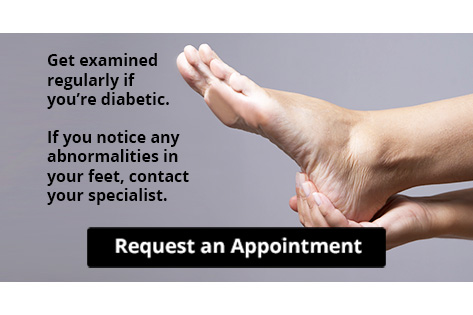Items filtered by date: August 2025
Managing Heel Spurs
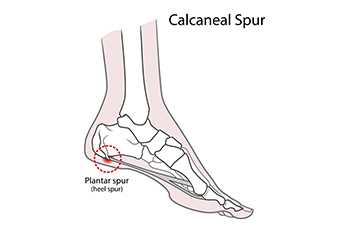
Heel spurs are bony growths that develop on the underside of the heel bone, often caused by long-term strain on the foot muscles and ligaments. Common causes include repetitive stress from walking or running, wearing poorly fitted shoes, obesity, or conditions like flat feet or high arches. Heel spurs are frequently associated with plantar fasciitis, a painful inflammation of the tissue along the bottom of the foot. Symptoms include sharp, stabbing pain in the heel, especially during the first steps in the morning, or after long periods of rest, along with tenderness, swelling, or a dull ache throughout the day. While some people may not feel any discomfort, others experience persistent pain that affects daily activities. A podiatrist can diagnose a heel spur through a physical exam and confirm the condition with X-rays. Treatment may involve orthotics, targeted exercises, stretching, anti-inflammatory medications, or, in severe cases, surgery. If you have a heel spur, it is suggested that you schedule an appointment with a podiatrist for effective treatment solutions.
Heel spurs can be incredibly painful and sometimes may make you unable to participate in physical activities. To get medical care for your heel spurs, contact Brian Doerr, DPM from Florida. Our doctor will do everything possible to treat your condition.
Heels Spurs
Heel spurs are formed by calcium deposits on the back of the foot where the heel is. This can also be caused by small fragments of bone breaking off one section of the foot, attaching onto the back of the foot. Heel spurs can also be bone growth on the back of the foot and may grow in the direction of the arch of the foot.
Older individuals usually suffer from heel spurs and pain sometimes intensifies with age. One of the main condition's spurs are related to is plantar fasciitis.
Pain
The pain associated with spurs is often because of weight placed on the feet. When someone is walking, their entire weight is concentrated on the feet. Bone spurs then have the tendency to affect other bones and tissues around the foot. As the pain continues, the feet will become tender and sensitive over time.
Treatments
There are many ways to treat heel spurs. If one is suffering from heel spurs in conjunction with pain, there are several methods for healing. Medication, surgery, and herbal care are some options.
If you have any questions, please feel free to contact our office located in Fort Meyers, FL . We offer the newest diagnostic and treatment technologies for all your foot care needs.
The Right Shoes Can Help Prevent Falling
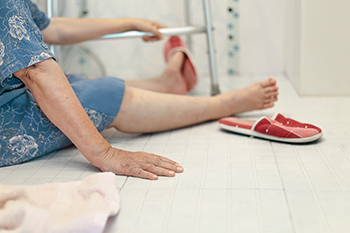
Wearing shoes that fit well and provide proper support can significantly reduce the risk of falls, especially as people age. When shopping for shoes, ensure they are the right length, with about a quarter of an inch extra space beyond your longest toe, allowing comfort without crowding. Choose shoes that close securely with laces or Velcro for a snug fit. This helps to accommodate natural foot swelling throughout the day. A supportive heel cup that stays in place and a wide, rounded heel enhance stability, offering more ground contact. Heel height should be no more than an inch for proper balance. Additionally, the shoe sole should have good traction without sticking to surfaces, and the toe area should be wide and deep enough for movement. Avoid shoes like floppy slippers with open heels or heavy footwear. If you have fallen recently and have sustained foot or ankle injuries, it is suggested that you schedule an appointment with a podiatrist who can treat various foot conditions, while guiding you on helpful tips on falls prevention.
Preventing falls among the elderly is very important. If you are older and have fallen or fear that you are prone to falling, consult with Brian Doerr, DPM from Florida. Our doctor will assess your condition and provide you with quality advice and care.
Every 11 seconds, an elderly American is being treated in an emergency room for a fall related injury. Falls are the leading cause of head and hip injuries for those 65 and older. Due to decreases in strength, balance, senses, and lack of awareness, elderly persons are very susceptible to falling. Thankfully, there are a number of things older persons can do to prevent falls.
How to Prevent Falls
Some effective methods that older persons can do to prevent falls include:
- Enrolling in strength and balance exercise program to increase balance and strength
- Periodically having your sight and hearing checked
- Discuss any medications you have with a doctor to see if it increases the risk of falling
- Clearing the house of falling hazards and installing devices like grab bars and railings
- Utilizing a walker or cane
- Wearing shoes that provide good support and cushioning
- Talking to family members about falling and increasing awareness
Falling can be a traumatic and embarrassing experience for elderly persons; this can make them less willing to leave the house, and less willing to talk to someone about their fears of falling. Doing such things, however, will increase the likelihood of tripping or losing one’s balance. Knowing the causes of falling and how to prevent them is the best way to mitigate the risk of serious injury.
If you have any questions, please feel free to contact our office located in Fort Meyers, FL . We offer the newest diagnostic and treatment technologies for all your foot care needs.
Inspect Your Feet Regularly for Abnormalities if You're Diabetic
Recognizing the Symptoms of Flat Feet and Finding Relief
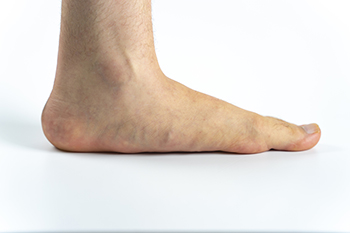
Flat feet occur when the arches of the feet collapse or fail to develop properly, leading to discomfort and mobility issues. Symptoms include arch pain, ankle swelling, stiffness, and aching in the calf muscles after standing or walking for long periods. Causes can include genetics, obesity, pregnancy, or injury that weakens the supporting structures of the foot. A podiatrist can assess the severity of flat feet, provide custom orthotics, recommend supportive footwear, and offer exercises to reduce pain and improve function. Ignoring symptoms can lead to long-term joint strain and difficulty walking. If you have painful flat feet, it is suggested that you seek treatment from a podiatrist.
Flatfoot is a condition many people suffer from. If you have flat feet, contact Brian Doerr, DPM from Florida. Our doctor will treat your foot and ankle needs.
What Are Flat Feet?
Flatfoot is a condition in which the arch of the foot is depressed and the sole of the foot is almost completely in contact with the ground. About 20-30% of the population generally has flat feet because their arches never formed during growth.
Conditions & Problems:
Having flat feet makes it difficult to run or walk because of the stress placed on the ankles.
Alignment – The general alignment of your legs can be disrupted, because the ankles move inward which can cause major discomfort.
Knees – If you have complications with your knees, flat feet can be a contributor to arthritis in that area.
Symptoms
- Pain around the heel or arch area
- Trouble standing on the tip toe
- Swelling around the inside of the ankle
- Flat look to one or both feet
- Having your shoes feel uneven when worn
Treatment
If you are experiencing pain and stress on the foot you may weaken the posterior tibial tendon, which runs around the inside of the ankle.
If you have any questions, please feel free to contact our office located in Fort Meyers, FL . We offer the newest diagnostic and treatment technologies for all your foot care needs.
Stretching the Feet to Prevent Arch Pain
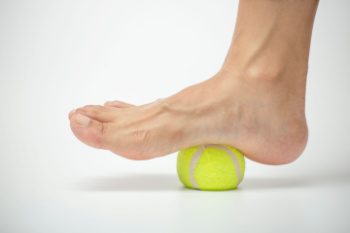
Arch pain in dancers often results from overuse, tight muscles, poor technique, or insufficient support. Repetitive movements and extended time on the toes place strain on the foot’s arch, leading to discomfort or injury. Gentle stretching of the toes, arches, and calves can improve flexibility and reduce tension. Rolling the foot over a soft ball and pointing and flexing exercises help maintain strength and mobility. A podiatrist can evaluate biomechanics, suggest supportive footwear or orthotics, and create a plan tailored to your dancing style. If you have developed arch pain that disrupts your dance practice or performance, it is suggested that you consult a podiatrist who can offer effective relief tips and stretching techniques.
Stretching the feet is a great way to prevent injuries. If you have any concerns with your feet consult with Brian Doerr, DPM from Florida. Our doctor will assess your condition and provide you with quality foot and ankle treatment.
Stretching the Feet
Stretching the muscles in the foot is an important part in any physical activity. Feet that are tight can lead to less flexibility and make you more prone to injury. One of the most common forms of foot pain, plantar fasciitis, can be stretched out to help ease the pain. Stretching can not only ease pain from plantar fasciitis but also prevent it as well. However, it is important to see a podiatrist first if stretching is right for you. Podiatrists can also recommend other ways to stretch your feet. Once you know whether stretching is right for you, here are some excellent stretches you can do.
- Using a foam roller or any cylindrical object (a water bottle or soda can will do), roll the object under your foot back and forth. You should also exert pressure on the object. Be sure to do this to both feet for a minute. Do this exercise three times each.
- Similar to the previous one, take a ball, such as a tennis ball, and roll it under your foot while seated and exert pressure on it.
- Grab a resistance band or towel and take a seat. If you are using a towel, fold it length wise. Next put either one between the ball of your foot and heel and pull with both hands on each side towards you. Hold this for 15 seconds and then switch feet. Do this three times for each foot.
- Finally hold your big toe while crossing one leg over the other. Pull the toe towards you and hold for 15 seconds. Once again do this three times per foot.
It is best to go easy when first stretching your foot and work your way up. If your foot starts hurting, stop exercising and ice and rest the foot. It is advised to then see a podiatrist for help.
If you have any questions please contact our office located in Fort Meyers, FL . We offer the newest diagnostic and treatment technologies for all your foot and ankle needs.
